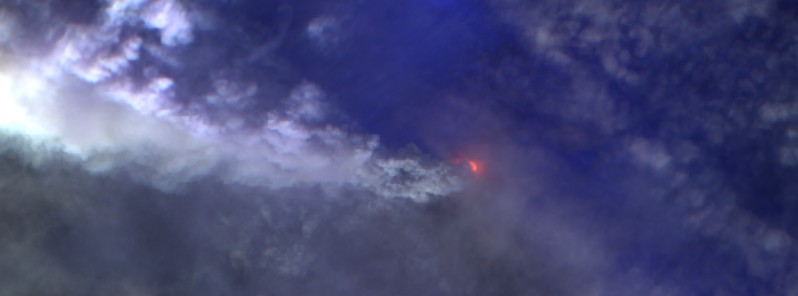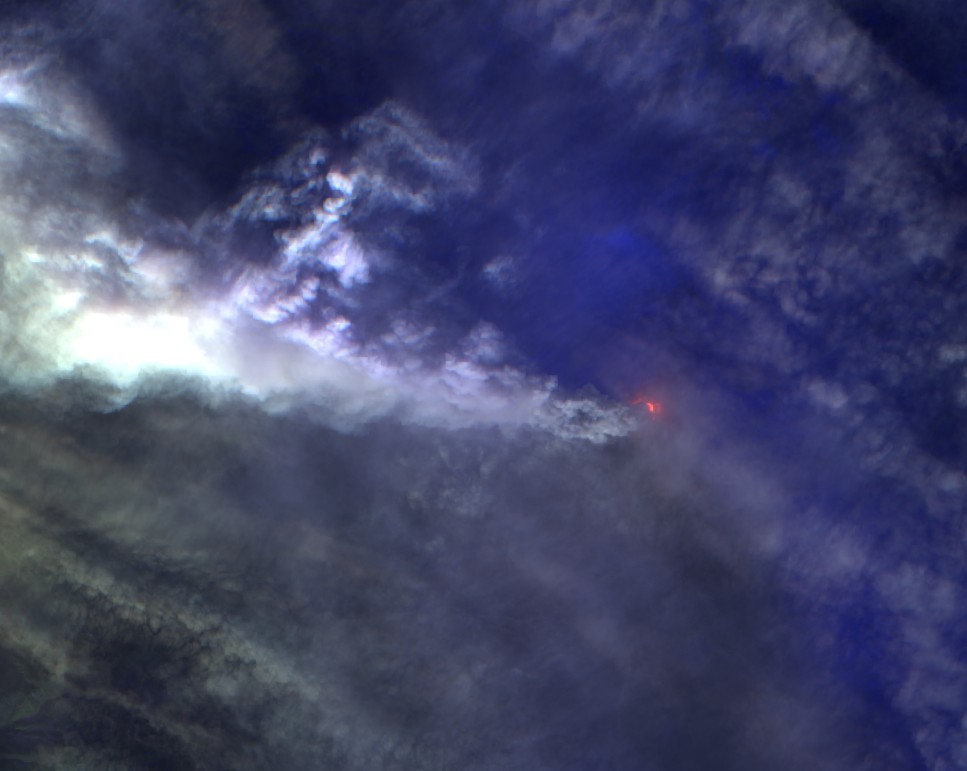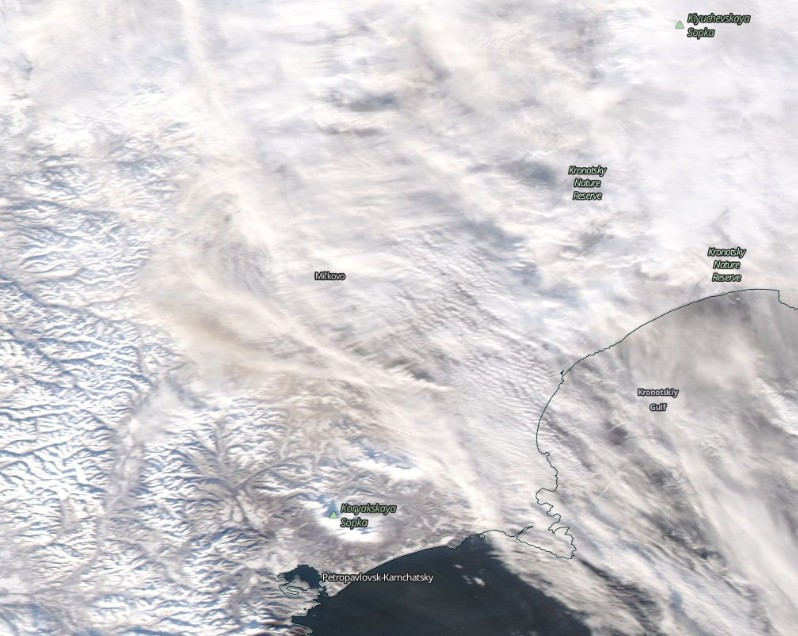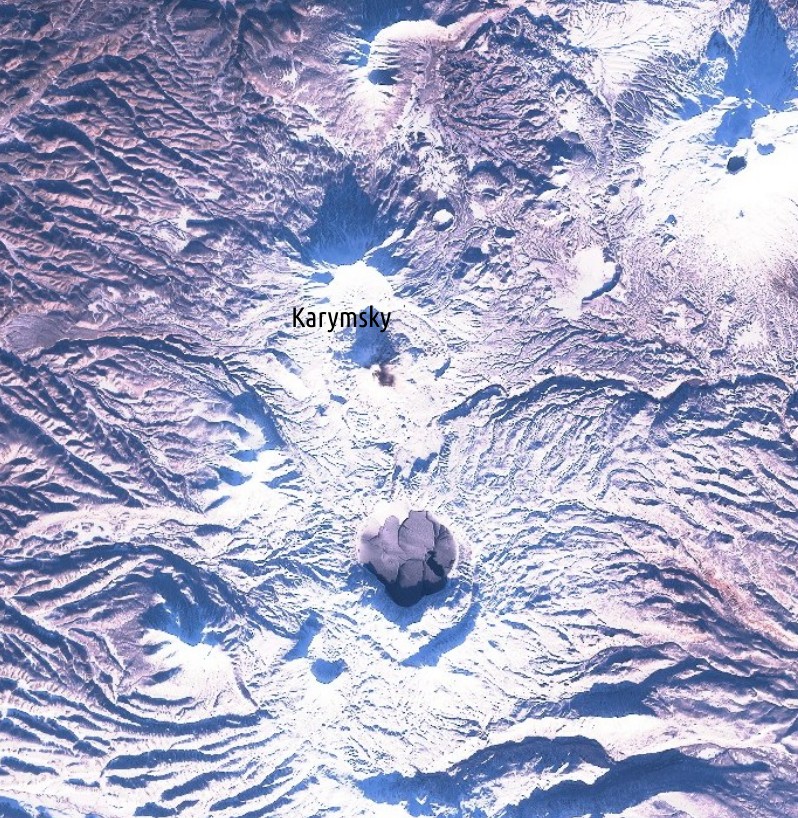Explosive activity resumes at Karymsky volcano, Aviation Color Code raised, Russia

Explosive activity resumed at Karymsky volcano, Kamchatka, Russia on December 9, 2020. The Aviation Color Code was raised to Orange.
Ash explosions up to 7 km (23 000 feet) above sea level began at about 20:45 UTC, drifting northwest of the volcano, KVERT reports.
The distance of the ash plume/cloud at 22:30 UTC on December 9 was 60 km (37 miles), NW.
The Aviation Color Code was raised from Yellow to Orange.
Ash explosions up to 5 – 7 km (16 400 to 23 000 feet) a.s.l. could occur at any time, affecting low-flying aircraft, KVERT warned.

Eruption at Karymsky volcano on December 10, 2020. Credit: Copernicus EU/Sentinel-2, TW

Image credit: NASA Aqua/MODIS. Acquired: December 10, 2020
The image below shows the volcano as seen by Sentinel-2 on December 3, 2020:

Karymsky volcano on December 3, 2020. Credit: Copernicus EU/Sentinel-2, TW
Geological summary
Karymsky, the most active volcano of Kamchatka's eastern volcanic zone, is a symmetrical stratovolcano constructed within a 5-km-wide (16 404 feet) caldera that formed during the early Holocene.
The caldera cuts the south side of the Pleistocene Dvor volcano and is located outside the north margin of the large mid-Pleistocene Polovinka caldera, which contains the smaller Akademia Nauk and Odnoboky calderas.
Most seismicity preceding Karymsky eruptions originated beneath Akademia Nauk caldera, located immediately south.
The caldera enclosing Karymsky formed about 7 600-7 700 radiocarbon years ago; construction of the stratovolcano began about 2 000 years later. The latest eruptive period began about 500 years ago, following a 2 300-year quiescence.
Much of the cone is mantled by lava flows less than 200 years old. Historical eruptions have been vulcanian or vulcanian-strombolian with moderate explosive activity and occasional lava flows from the summit crater.
Featured image: Eruption at Karymsky volcano on December 10, 2020. Credit: Copernicus EU/Sentinel-2, TW

Commenting rules and guidelines
We value the thoughts and opinions of our readers and welcome healthy discussions on our website. In order to maintain a respectful and positive community, we ask that all commenters follow these rules.